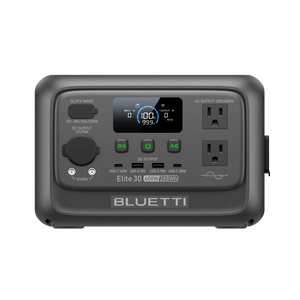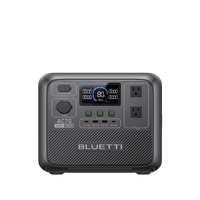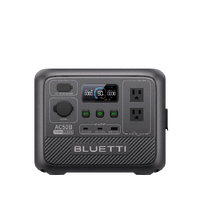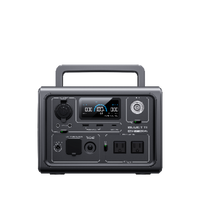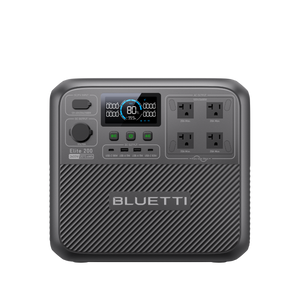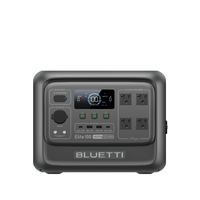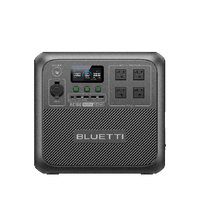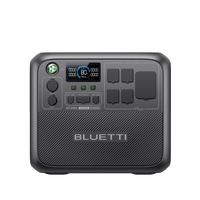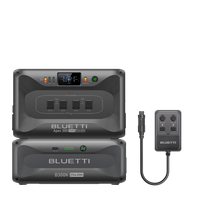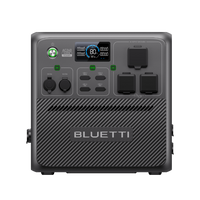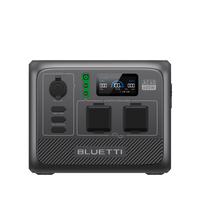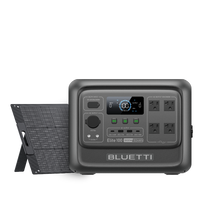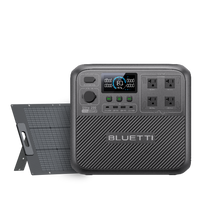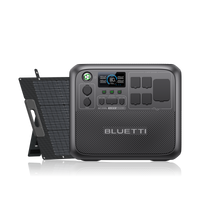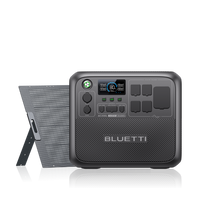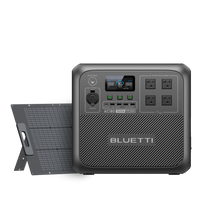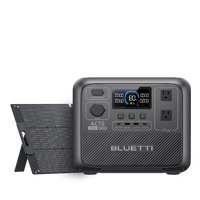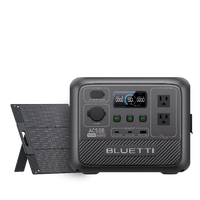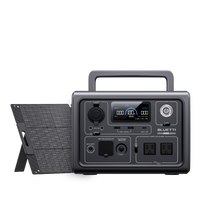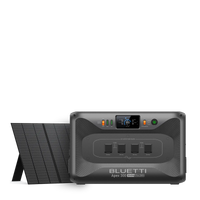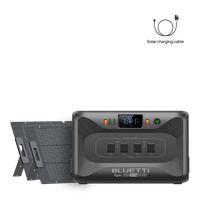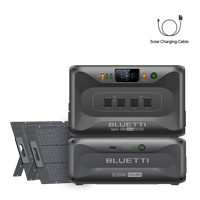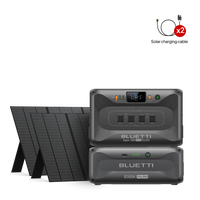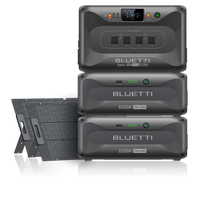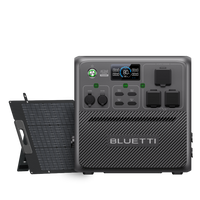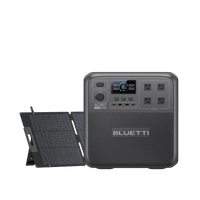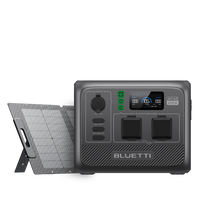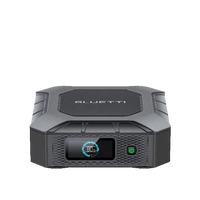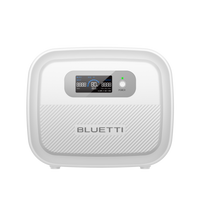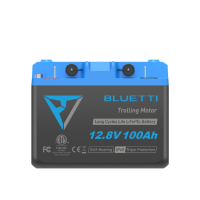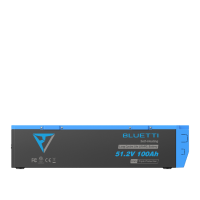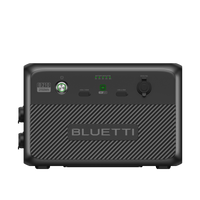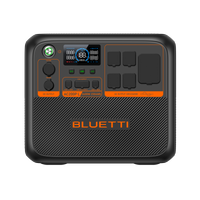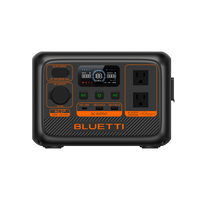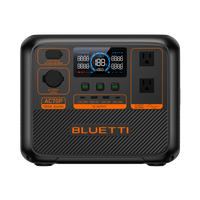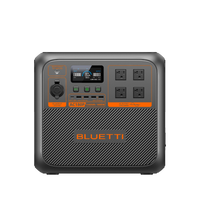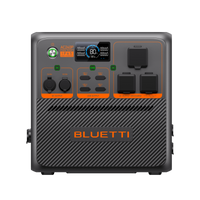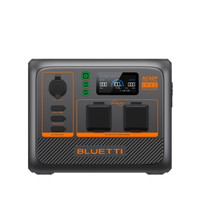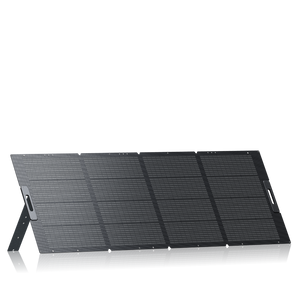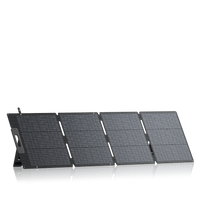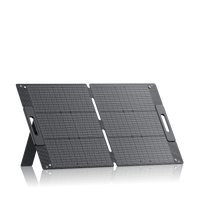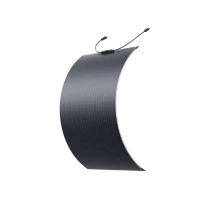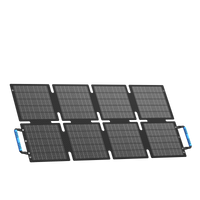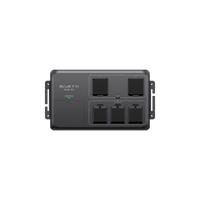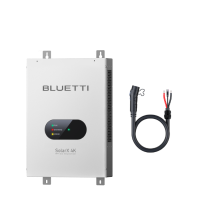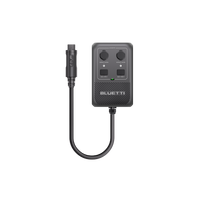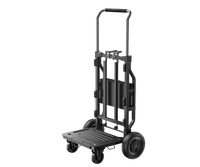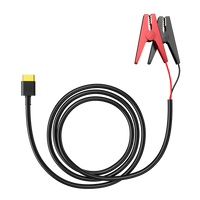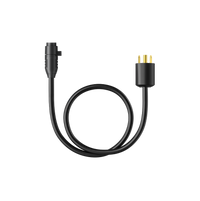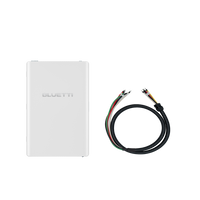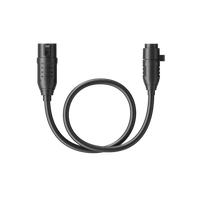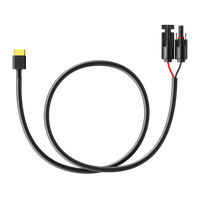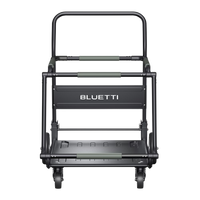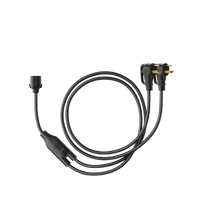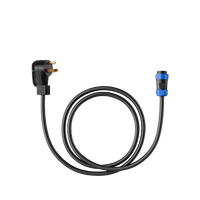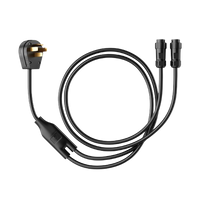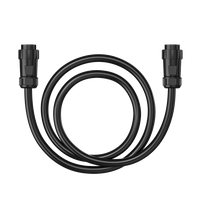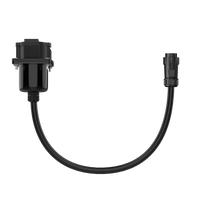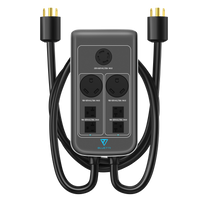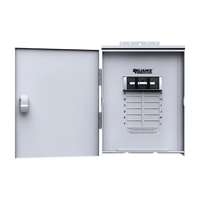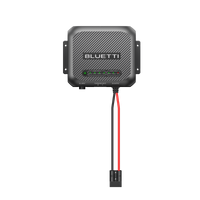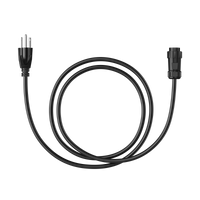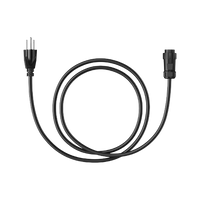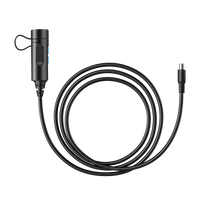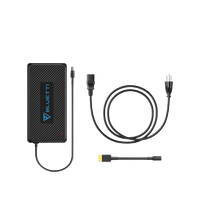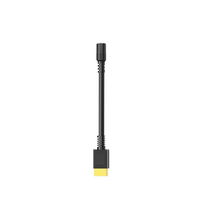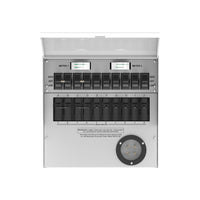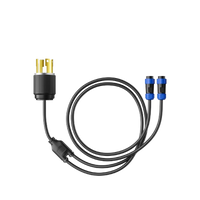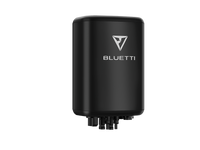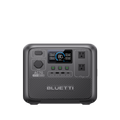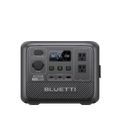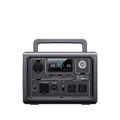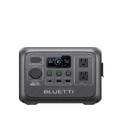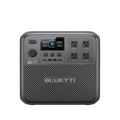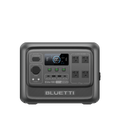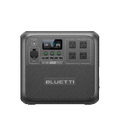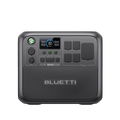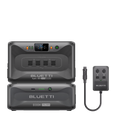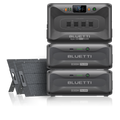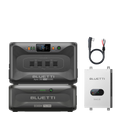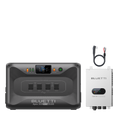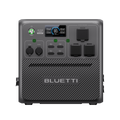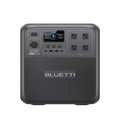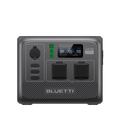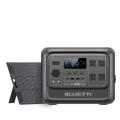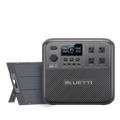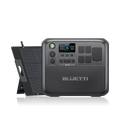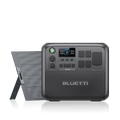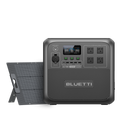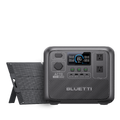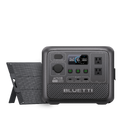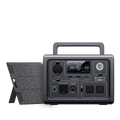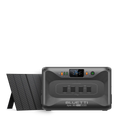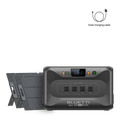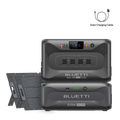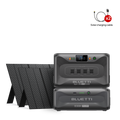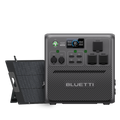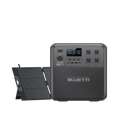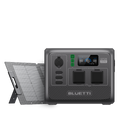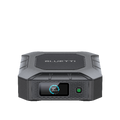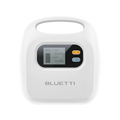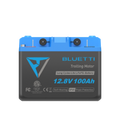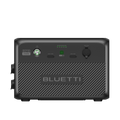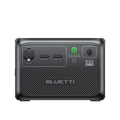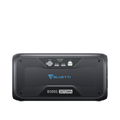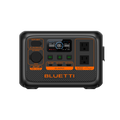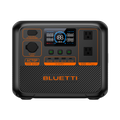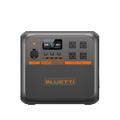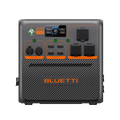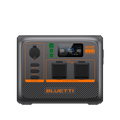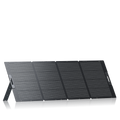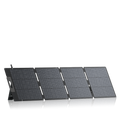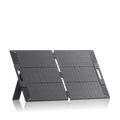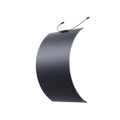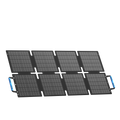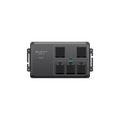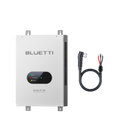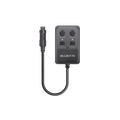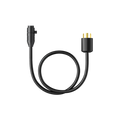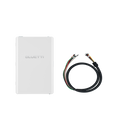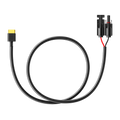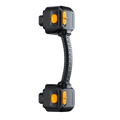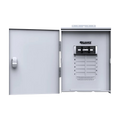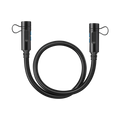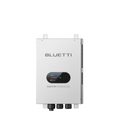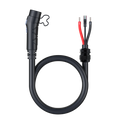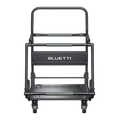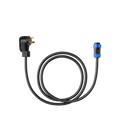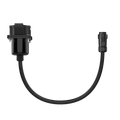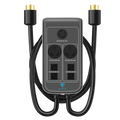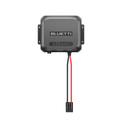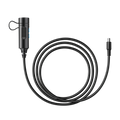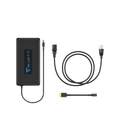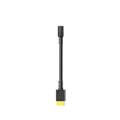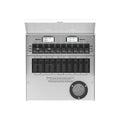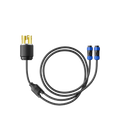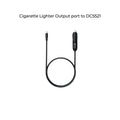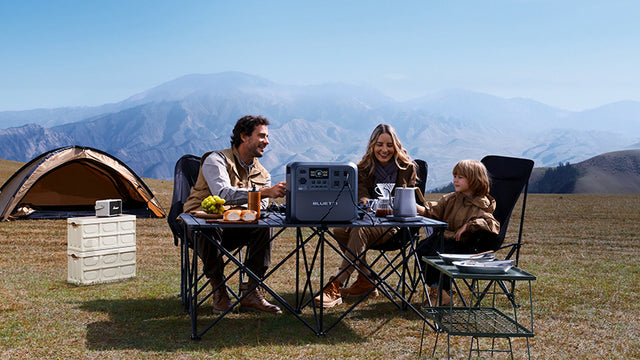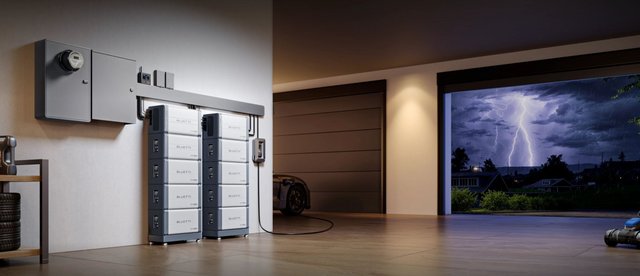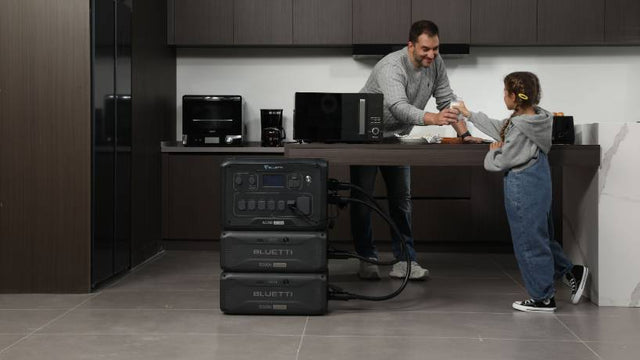Your cart is empty
Shop our productsElectricity is a crucial part of our daily lives, powering everything from our appliances and devices to our homes and businesses. However, with the amount of electricity we use, it's important to know how to safely and efficiently handle it. One essential aspect of this is knowing the right size wire to use for different amperages. In this article, we will focus on answering the question, "What size wire is needed for a 40 amp breaker?" Understanding the proper wire size for a 40 amp breaker is crucial for maintaining the safety and functionality of your electrical system. So, let's dive in and discover everything you need to know about this important topic.
How Do You Size a Wire?
When it comes to electrical installations, it is important to choose the right size wire for the specific application. This is especially crucial when dealing with higher amperage circuits, as using the wrong wire size can lead to potential fire hazards and damage to your electrical system. A common question that arises when working with 40 amp circuits is “What size wire do I need for a 40 amp breaker?” To answer this question, we must first understand the relationship between amperage and breaker size.
Amperage (amps) is a measure of the amount of electrical current flowing through a circuit. It is represented by the letter “A” and is typically found on the rating label of electrical appliances and devices. Breakers, on the other hand, are devices that are designed to protect the electrical system from overloading and short circuits. They are rated in amps and are meant to trip and cut off the flow of electricity when the circuit exceeds the specified amperage limit. In order to choose the right wire size for a 40 amp breaker, we must first determine the amperage rating of the circuit.
Relationship between Amperage and Breaker Size
The National Electrical Code (NEC) sets standards for electrical installations, including the sizing of wires and breakers. According to the NEC, a 40 amp breaker can safely handle a maximum of 40 amps of current. This means that the wire size chosen for a 40 amp breaker must be able to carry at least 40 amps of current without overheating. The general rule of thumb is that the wire must have a capacity of at least 125% of the amperage rating of the circuit. Therefore, for a 40 amp breaker, the wire must have a capacity of at least 50 amps (40 x 125%). This is known as the “25% rule” and is meant to provide a safety margin for the electrical system.
It is also important to consider the type of wire being used. Copper is the most commonly used material for electrical wiring due to its high conductivity and durability. However, for higher amperage circuits, aluminum wires are recommended as they have a higher melting point and can handle more current. When using aluminum wires for a 40 amp circuit, they must have a capacity of at least 62.5 amps (50 x 125%) to meet the 25% rule.
Wire Gauge for a 40 Amp Breaker
The wire gauge, also known as the American wire gauge (AWG), is a standardized system used to measure the diameter of wires. The lower the AWG number, the thicker the wire. For a 40 amp circuit, the recommended wire gauge for copper wires is 8 AWG. This wire gauge has a capacity of 55 amps, which meets the 25% rule and provides a safe margin for the circuit. For aluminum wires, the recommended wire gauge is 6 AWG. This gauge has a capacity of 65 amps and can safely handle the 40 amp current without overheating.
In addition to the wire gauge, it is important to consider the length of the wire. Longer wire lengths lead to higher electrical resistance and can result in voltage drops, which can cause issues with the circuit. To minimize voltage drops and ensure the proper functioning of the circuit, the wire should be as short as possible.
when sizing a wire for a 40 amp breaker, it is important to consider the amperage rating and type of wire being used. The wire must have a capacity of at least 125% of the amperage rating of the circuit to meet the safety standards set by the NEC. For a 40 amp circuit, the recommended wire gauge for copper wires is 8 AWG, while for aluminum wires, it is 6 AWG. It is also important to keep the wire length as short as possible to avoid voltage drops. Adhering to these guidelines will ensure a safe and efficient electrical installation.

II. Factors to Consider When Choosing Wire Size
When it comes to determining the appropriate wire size for a 40 amp breaker, there are several factors that need to be taken into consideration. These factors will not only ensure the safety and efficiency of your electrical system, but also comply with the National Electrical Code (NEC) guidelines.
A. Amperage of the Circuit
The first and most important factor to consider is the amperage of the circuit. In this case, the circuit is rated for 40 amps, which means that the wire must be able to handle at least 40 amps of current without overheating. This is important to prevent the wire from becoming a fire hazard.
The amperage of the circuit is determined by the size and type of the breaker. In this case, the 40 amp breaker is designed to protect the circuit from any current over 40 amps. It is important to note that the amperage of the circuit cannot be changed, therefore, the wire must be chosen to match the amperage rating of the breaker.
B. Length of the Wire
The length of the wire is another crucial factor to consider. The longer the distance the wire will need to travel, the more resistance it will have. This resistance can cause the wire to heat up and potentially become a fire hazard. The longer the wire, the higher the gauge (or thickness) of wire you will need to use.
For example, if the wire needs to travel a long distance, you may need to use a heavier gauge wire such as 8 or 6 AWG (American Wire Gauge) in order to minimize resistance. However, if the distance is short, you can use a lighter gauge wire such as 10 AWG.
C. Type of Wire
The type of wire you choose is also important. There are different types of wire, such as copper, aluminum, and copper-clad aluminum, each with its own advantages and disadvantages.
Copper is the most commonly used type of wire for residential electrical systems because it is a good conductor of electricity and is resistant to corrosion. However, it is more expensive than aluminum.
Aluminum is cheaper than copper, but it is not as good of a conductor, so it may need to be a larger gauge to carry the same amount of current. Additionally, aluminum can be more prone to corrosion and can create fire hazards if not installed properly.
Copper-clad aluminum (CCA) is a cheaper alternative to copper and is a good conductor, but it is not as durable as pure copper and can be difficult to terminate. It is important to check with local codes to ensure that CCA wire is acceptable for use in your area.
D. Material of the Wire
The material of the wire is also an important consideration. The most common materials used in residential wiring are copper and aluminum. However, there are also wires made of other materials such as silver, gold, and nickel. These materials may have different electrical properties and can affect the overall performance of the wire.
It is important to choose a wire with the appropriate material for your specific application. For example, if you are installing wiring in a high-temperature environment, it is recommended to use a wire with a higher temperature rating to ensure it can withstand the heat.
E. Temperature Rating of the Wire
The temperature rating of the wire is another crucial factor to consider. This rating determines the maximum temperature that the wire can safely handle without being damaged. The higher the amperage of the circuit, the more heat the wire will generate, so it is important to choose a wire with a temperature rating that can handle the expected heat.
For a 40 amp circuit, the wire should have a temperature rating of at least 90°C or 194°F. This will ensure that the wire can safely handle the heat without melting or causing other safety hazards.
choosing the right wire size for a 40 amp breaker is crucial to ensure the safety and efficiency of your electrical system. It is important to consider the amperage of the circuit, the length and type of wire, the material of the wire, and the temperature rating when making your decision. By following these guidelines and consulting with a professional electrician, you can ensure that your electrical system is up to code and functioning properly.

III. General Guidelines for Wire Size and Breaker Size
When it comes to electrical wiring, it is crucial to follow the guidelines set by the National Electrical Code (NEC). The NEC is a standard that outlines the minimum requirements for safe electrical installations in the United States. It is important to adhere to these standards to ensure the safety of both people and property.
A. National Electrical Code (NEC) standards:
The NEC provides specific guidelines for wire and breaker sizes based on the amperage rating of the circuit. These standards are constantly updated and reviewed to ensure the safety and efficiency of electrical systems. It is important to consult the most recent version of the NEC when determining the appropriate wire size for a 40 amp breaker.
B. Recommended wire sizes for different amperage ratings:
According to the NEC, the recommended wire size for a 40 amp circuit is 8-gauge for copper wire and 6-gauge for aluminum wire. However, the actual wire size required may vary depending on the length of the circuit and the type of wiring used. It is important to consult a licensed electrician or refer to the NEC guidelines to determine the appropriate wire size for your specific installation.
C. Minimum and maximum wire sizes for 40 amps circuit:
The NEC also sets the minimum and maximum wire sizes for a 40 amp circuit. The minimum wire size is determined by the amperage rating of the circuit and the type of insulation used. Using a wire size that is too small for a 40 amp circuit can cause overheating and potentially start a fire. On the other hand, using a wire size that is too large can be a waste of resources. The maximum wire size is determined by the size of the terminals on the breaker and can vary depending on the manufacturer.
D. Importance of following guidelines for safety:
Following the recommended wire size for a 40 amp breaker is crucial for the safety of both the electrical system and those who use it. Using the appropriate wire size helps prevent overheating, short circuits, and electrical fires. It also ensures that the circuit can handle the amperage load without tripping the breaker. These guidelines are put in place to protect both people and property from the dangers of faulty electrical systems. It is important to always consult a licensed electrician and adhere to the NEC standards when installing or upgrading electrical systems.
when determining the appropriate wire size for a 40 amp breaker, it is important to refer to the guidelines set by the National Electrical Code. These standards are constantly updated to ensure the safety and efficiency of electrical installations. By following these guidelines, we can ensure the safety of our homes and workplaces and prevent potentially dangerous situations.
Wire Size for 40 Amps Breaker
Overview of 40 Amps CircuitsBefore determining the appropriate wire size for a 40 amps breaker, it is important to understand what a 40 amps circuit is. A circuit is a closed loop that allows electricity to flow through it, providing power to various electrical devices. The 40 amps designation refers to the maximum amount of electrical current that can safely flow through the circuit without causing damage or overheating.
Recommended Wire Sizes for Different Types of 40 Amps Circuits
The size of wire needed for a 40 amps circuit will depend on the type of circuit and the amount of voltage it is carrying. Here are the recommended wire sizes for different types of 40 amps circuits:
1. 120 Volts Single-Phase Circuits: For a 120 volts single-phase circuit, the recommended wire size is 8 AWG (American Wire Gauge). This wire size is suitable for most residential and light commercial applications, such as powering appliances and lighting.
2. 240 Volts Single-Phase Circuits: A 240 volts single-phase circuit requires a larger wire size than a 120 volts circuit. The recommended wire size for this type of circuit is 6 AWG. This size is commonly used for larger appliances such as stoves, dryers, and air conditioners.
3. Three-Phase Circuits: Three-phase circuits are commonly found in commercial and industrial settings. The recommended wire size for a 40 amps three-phase circuit is 10 AWG. This size is suitable for powering larger equipment and machinery.
Calculating Wire Size for 40 Amps Breaker
To ensure the safety and functionality of a 40 amps circuit, it is crucial to use the correct wire size. The following steps can help calculate the appropriate wire size for a 40 amps breaker:
1. Determine the voltage of the circuit: The first step is to determine the voltage of the circuit, which can be 120 volts, 240 volts, or three-phase.
2. Calculate the amperage: Next, calculate the amperage by dividing the wattage of the circuit by the voltage. For a 40 amps circuit, the amperage is 40 amps.
3. Use the ampacity chart: Consult an ampacity chart to determine the appropriate wire size for the amperage and voltage of the circuit. An ampacity chart is a table that shows the maximum ampacity or current carrying capacity of different wire sizes.
4. Consider the length of the wire: The length of the wire also plays a role in determining the appropriate size. Longer wires will have more resistance and may require a larger wire size to prevent overheating.
5. Take into account the type of wire: The type of wire used also affects the appropriate wire size. For example, aluminum wire has a lower ampacity than copper wire and may require a larger size to carry the same amount of current.
the recommended wire size for a 40 amps breaker will vary depending on the voltage and type of circuit. It is essential to calculate the appropriate wire size to ensure the safety and proper functioning of the circuit.

What Is the Difference Between AWG and SWG?
IntroductionWhen it comes to electrical wiring, it is important to choose the right size wire for the amount of amps that will be running through it. This is especially crucial for higher amperage circuits, such as a 40 amp breaker. One of the most common questions when it comes to choosing wire size is the difference between AWG and SWG. These are two different systems used to measure wire size, and understanding the difference between them is essential in selecting the appropriate wire size for a 40 amp breaker.
AWG (American Wire Gauge)
AWG, or American Wire Gauge, is the most common system used to measure wire size in the United States. It was first established in 1857 by the American wire gauge system and is based on a logarithmic scale. This means that as the gauge number increases, the wire diameter decreases. AWG uses a standardized numbering system, with 0000 being the largest size wire and 40 being the smallest. The higher the number, the smaller the wire size.
For a 40 amp breaker, the recommended wire size would be 8 AWG. This means that the wire has a diameter of 0.1285 inches. In comparison, the recommended wire size for a 20 amp breaker would be 12 AWG, which has a diameter of 0.0808 inches. As you can see, the wire size decreases as the amperage increases, and this is where the confusion between AWG and SWG can arise.
SWG (Standard Wire Gauge)SWG, or Standard Wire Gauge, is a system that originated in Britain and is still used in some parts of the world today. Unlike AWG, which uses a logarithmic scale, SWG uses a linear scale. This means that as the gauge number increases, the wire diameter also increases. SWG also uses a different numbering system than AWG, with the smallest wire being represented by a higher number. For example, 7 SWG is larger than 10 SWG.
In the SWG system, the recommended wire size for a 40 amp breaker would be 6 SWG. This is equivalent to 0.162 inches in diameter, which is larger than the 8 AWG recommended for a 40 amp breaker in the AWG system. This is where understanding the difference between AWG and SWG is crucial in selecting the appropriate wire size for a 40 amp breaker.
Which System to Use?When choosing the right size wire for a 40 amp breaker, it is important to consider which system is being used. In the United States, AWG is the standard system, so it is recommended to use this system when selecting wire size. However, if you are in a country that uses SWG, then using this system would be more appropriate.
It is also worth noting that while AWG and SWG have some overlap in their wire sizes, they are not interchangeable. For example, 8 AWG is equivalent to 8 SWG, but 6 AWG is not the same as 6 SWG. Therefore, it is important to stick to one system when selecting wire sizes to ensure accuracy and safety.
Conclusionunderstanding the difference between AWG and SWG is crucial in selecting the right size wire for a 40 amp breaker. While both systems are used to measure wire size, they use different scales and numbering systems. AWG is the standard system used in the United States, while SWG is used in other parts of the world. When selecting wire size, it is important to stick to one system and avoid mixing them up. By choosing the correct wire size for a 40 amp breaker, you can ensure the safety and efficiency of your electrical circuit.
V. Types of Wire for 40 Amps Breaker
When it comes to choosing the right wire for a 40 amp breaker, there are two main options: copper wire and aluminum wire. Both have their own advantages and disadvantages, and it is important to understand the differences between them before making a decision.
A. Copper Wire
Copper wire is the most commonly used type of wire in residential and commercial wiring. It is known for its high conductivity and durability, making it suitable for various electrical applications. When choosing copper wire for a 40 amp breaker, here are some things to consider:
1. Advantages
Copper wire has a higher conductivity compared to aluminum wire. This means that it can handle higher amounts of current without overheating, making it the ideal choice for 40 amp circuits. It is also more flexible and easier to work with, making it a preferred option for electricians. In addition, copper wire has a longer lifespan compared to aluminum wire.
2. Disadvantages
The main disadvantage of copper wire is its cost. It is more expensive compared to aluminum wire, which can be a significant factor when considering the amount of wire needed for a 40 amp breaker. Additionally, copper wire is more susceptible to corrosion and can be damaged by certain chemicals, causing potential safety hazards.
B. Aluminum Wire
Aluminum wire was commonly used in the past, but it has been replaced by copper wire due to safety concerns. However, it is still an option for 40 amp circuits, and here are the things to consider:
1. Advantages
Aluminum wire is less expensive than copper wire, making it a more budget-friendly option for larger electrical projects. It is also lightweight and easy to install, which can save time and effort during installation. Additionally, aluminum wire can handle high temperatures, which can be beneficial in certain environments.
2. Disadvantages
One of the main disadvantages of aluminum wire is its lower conductivity compared to copper wire. This means that it is not as efficient in carrying high amounts of current, making it less suitable for 40 amp circuits. It is also more prone to expanding and contracting with temperature changes, which can cause loose connections and potential fire hazards.
C. Comparison between Copper and Aluminum Wire for 40 Amp Circuits
When deciding between copper and aluminum wire for a 40 amp breaker, it is important to consider the specific needs of the electrical project. Copper wire is the better option in terms of conductivity, durability, and safety, but it comes at a higher cost. On the other hand, aluminum wire is more budget-friendly but may not be as efficient or durable as copper wire. Ultimately, the decision will depend on the specific requirements and budget of the project.
when choosing the right wire for a 40 amp breaker, it is important to carefully consider the advantages and disadvantages of both copper and aluminum wire. The right choice will ensure the safety and efficiency of the electrical project.
1. What type of electrical appliance or equipment is the 40 amp breaker intended for?
The 40 amp breaker is typically intended for larger electrical appliances or equipment that require a higher amount of electricity to function. This can include items such as electric stoves, dryers, air conditioners, and larger power tools. These types of appliances and equipment draw a significant amount of power and therefore need a larger circuit to handle it. A 40 amp breaker provides more capacity and protection for these devices compared to smaller breakers. It is important to make sure that the appliance or equipment you are using is compatible with a 40 amp breaker, as using a smaller breaker can result in tripped circuits and potential safety hazards.
Some specific examples of appliances and equipment that may require a 40 amp breaker include:- An electric oven or range, which typically draws between 30-50 amps of electricity.
- A clothes dryer, which can draw anywhere from 30-50 amps depending on the model and size.
- A large air conditioning unit, which can draw up to 40 amps to power the compressor and other components.
- Welders or other heavy-duty power tools that require a significant amount of electricity to operate.
In general, any appliance or equipment that draws more than 20 amps of electricity will likely require a 40 amp breaker. It is always important to check the manufacturer's specifications and recommendations for the proper breaker size for your specific appliance or equipment. This will ensure that your electrical system is able to safely and efficiently provide the necessary power for your devices.
2. What is the recommended wire gauge for a 40 amp breaker in your specific electrical system or location?
In general, the recommended wire gauge for a 40 amp breaker is a 8 or 6 gauge wire. However, it is important to note that the specific wire gauge required may vary depending on your location and electrical system. It is always best to consult with a licensed electrician before deciding on the appropriate wire gauge for your 40 amp breaker.
Factors such as the length of the wire, the type of insulation used, and the temperature rating of the wire should all be taken into consideration when determining the correct wire gauge for a 40 amp breaker. Additionally, local building codes may also have specific requirements for wire gauges in certain areas.
Using the wrong wire gauge for a 40 amp breaker can result in overheating and potentially lead to electrical fires. On the other hand, using a larger wire gauge than necessary can also be costly and inefficient. Therefore, it is crucial to carefully select the appropriate wire gauge for your specific electrical system and location to ensure safety and efficiency.
the recommended wire gauge for a 40 amp breaker may vary based on your location and electrical system. It is important to consult with a licensed electrician to determine the appropriate wire gauge to ensure safety and efficiency in your electrical system.
3. Are there any specific safety codes or regulations that dictate the wire size for a 40 amp breaker?
When it comes to electrical wiring, safety is of utmost importance. This is why there are strict codes and regulations in place to ensure that proper wire sizes are used for specific amperage ratings. The National Electrical Code (NEC) is the primary source for determining the appropriate wire size for a 40 amp breaker.
The NEC dictates that for a 40 amp breaker, a minimum of 8 gauge copper wire or 6 gauge aluminum wire should be used. This is based on the fact that a 40 amp breaker can handle a maximum load of 40 amps at any given time. Using a smaller wire size could result in overheating and potential hazards.
In addition to the NEC, there may also be local building codes or regulations that specify the wire size for a 40 amp breaker. It is important to always consult with a licensed electrician and check with local authorities before starting any electrical wiring project.
In summary, there are specific safety codes and regulations that dictate the wire size for a 40 amp breaker. These codes are in place to ensure the safety of individuals and to prevent electrical hazards. Adhering to these codes and consulting with professionals will help ensure that the right wire size is used for a 40 amp breaker.
In general, a 40 amp breaker requires a wire that is at least 8-gauge in size. However, this may vary depending on the specific application and the distance the wire needs to travel. It is always best to consult with a licensed electrician to determine the correct wire size for your specific needs. Remember, using an incorrect wire size can not only be dangerous, but it can also damage your electrical system and appliances. Don't take any chances when it comes to electrical work – always seek professional help to ensure your safety and the proper functioning of your electrical system.
Shop products from this article
Be the First to Know
You May Also Like

Cherokee Electric Cooperative: Bill Pay, Outage Map, and Customer Service Guide
Cherokee Electric Coop is a local electric cooperative that provides reliable energy services to its members. This article provides important information about this cooperative, such as how to pay your...

Central Florida Electric Cooperative: Pay Bill | Outage Map | Customer Service | Phone Number
This article will discuss the services offered by Central Florida Electric Cooperative and provide customers with important information about how to pay their bills, check outages maps, get customer service,...
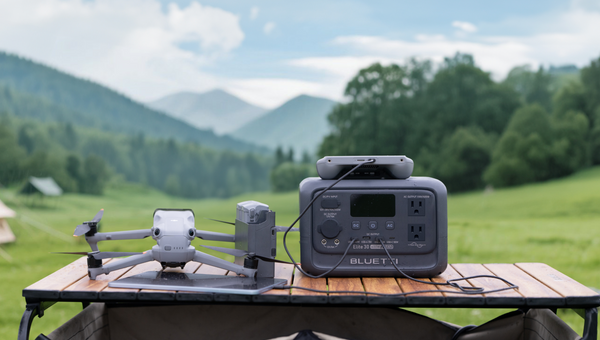
BVU Authority: Pay Bill | Check Outage Map | Customer Service | Phone Number
This article is all about providing readers with vital information about Bvu Authority, one of the leading utilities providers in the United States. We will cover topics such as how...

